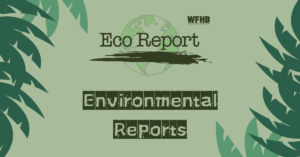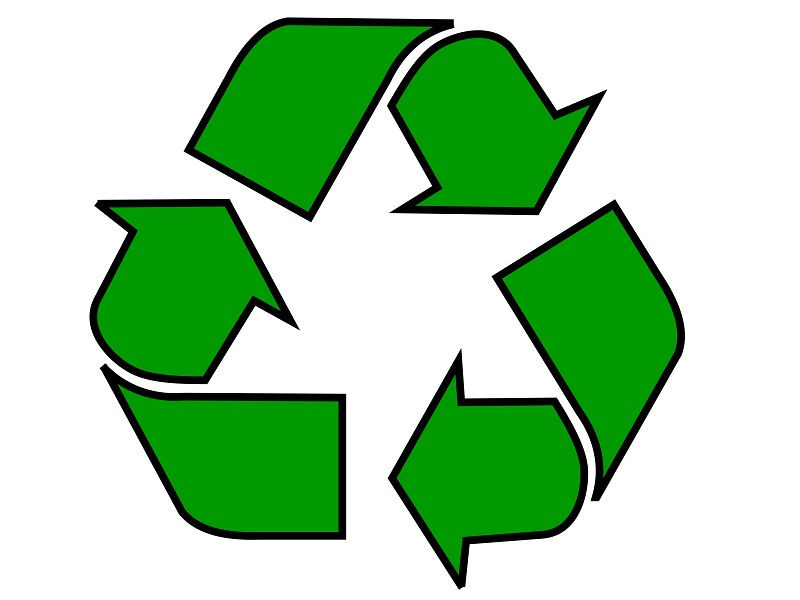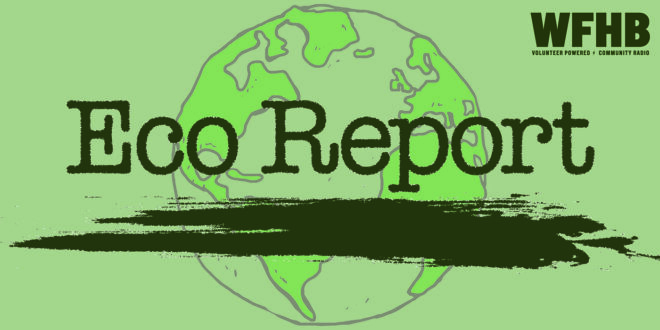Podcast: Play in new window | Download (Duration: 30:35 — 28.1MB)
In this week’s Eco Report feature, part 2 of WFHB Environmental Correspondent Robert Shull’s conversation with Marcia Veldman, founder of the South Central Indiana chapter of Citizens’ Climate Lobby.

- Polyethelene, also known as PE, has three types:
• High-density polyethylene (HDPE) is known for its strength, stiffness, and resistance to moisture and chemicals. It is used in bottles, containers, pipes and plastic lumber.
• Low-density polyethylene (LDPE) is flexible and commonly used in packaging films, plastic bags and squeezable bottles.
• Linear low-density polyethylene (LLDPE) combines the properties of LDPE and HDPE to be used in films, bags and liners.
-
Polypropylene (PP) which is tough and heat-resistant and is used in food containers, packaging, automotive parts and textiles.
-
Polyvinyl Chloride (PVC) which is rigid PVC and is used in construction materials like pipes, window frames and siding. Flexible PVC is used in inflatable structures, medical tubing, electrical cable insulation and flooring.
-
Polystyrene (PS). General-Purpose Polystyrene (GPPS) is transparent and rigid and used in food packaging, disposable cutlery and CD cases. Expanded Polystyrene (EPS) is lightweight and insulating and used in packaging, thermal insulation and disposable cups. There are more categories to be covered which we will discuss next week. What we are trying to teach you, is that practically everything in our homes, offices and lives has a lot of plastic in it.
.

-
Make a Solar Eclipse Viewer at Spring Mill State Park on Saturday, March 30th from 11 am to Noon. Learn about the solar eclipse and how to safely view the sun. Meet at the Lakeview Activity Center. Please register in advance.
-
Learn about the upcoming solar eclipse at Brown County State Park at the Eclipse 101 program on Friday, April 5th from 4 to 4:45 pm in the Nature Center. Learn what you need to know at this once in a life time event.
-
There will be a Woodcock Walk at Goose Pond Fish and Wildlife Area on Saturday, March 30th from 6 to 7:30 pm. Enjoy an evening excursion to watch the American Woodcock perform its mating ritual – the ‘Sky Dance.’ Dress for the weather and be prepared for muddy conditions.
-
Enjoy a Bluebird Nest Box Building Workshop at McCormick’s Creek State Park on Saturday, March 30th beginning at 1 pm. The Brown County Bluebird Club will teach you all about these birds while you build your very own bluebird box. Register to Dan Sparks at [email protected] or call 812-200-5700.
-
Make a Solar Eclipse T-Shirt at Spring Mill State Park on Saturday, April 6th from 1 to 2 pm in the Lakeview Activity Center. Bring a solid black t-shirt with no designs. The park will provide the rest of the supplies.
Credits:
This week’s headlines were written by Norm Holy and Julianna Dailey
Today’s news feature was produced by Robert Shull and edited by Kade Young
Julianna Dailey assembled the script which was edited by the Eco Report team
Julianna Dailey compiled our events calendar
Kade Young and Noelle Herhusky-Schneider produced today’s show
Branden Blewett engineered the show
Julianna Dailey and Cynthia Roberts anchored the show
Are you looking for a way to make a difference on environmental issues? Eco Report is looking for reporters, engineers, and segment producers who are passionate about reporting facts on how we’re all affected by global climate disruption and the ongoing assaults on our air, land and water. We also celebrate ecologists, tree huggers, soil builders and an assortment of champions who actively protect and restore our natural world, particularly those who are active in south central Indiana. All levels of experience and all ages are welcome, and we provide the training you’ll need. WFHB also offers internships. To volunteer for Eco Report, give us a call at (812) 323-1200, or e-mail us at: [email protected]. Are you one of those people who believes our Mother Earth is getting dirtier and dirtier from all our trash? Here are a few tips to help keep the Earth cleaner.
Are you one of those people who believes our Mother Earth is getting dirtier and dirtier from all our trash? Here are a few tips to help keep the Earth cleaner.- Stop buying Styrofoam items. Styrofoam is forever. It is not biodegradable, so instead invest in some reusable mugs that you can take with you.
- Do you like to eat salmon? Several studies have found that PCB’s, which is a class of toxic chemicals, and other environmental toxins are present at higher levels in farm raised salmon than wild salmon. Look for safe seafood when shopping for salmon.
- What about those coffee filters? Are you a coffee drinker? Dioxins, chemicals formed during the chlorine bleaching process, contaminate groundwater and air and are linked to cancer. Start buying unbleached paper filters or use reusable filters.
- We all love to go to picnics, especially when the weather is nice. The next time you host or attend a picnic, bring your own utensils and food containers. Plastic forks, spoons, straws, and all that plastic stuff you see at a picnic are not biodegradable and not recyclable.
- One more thing you might want to stop using is paper towels. Regular paper towels are bleached, and waste forest resources and landfill space. Look for recycled, non-bleached paper towels or better yet, buy dishtowels or rags to wash and reuse.
 WFHB Bloomington Community Radio
WFHB Bloomington Community Radio


